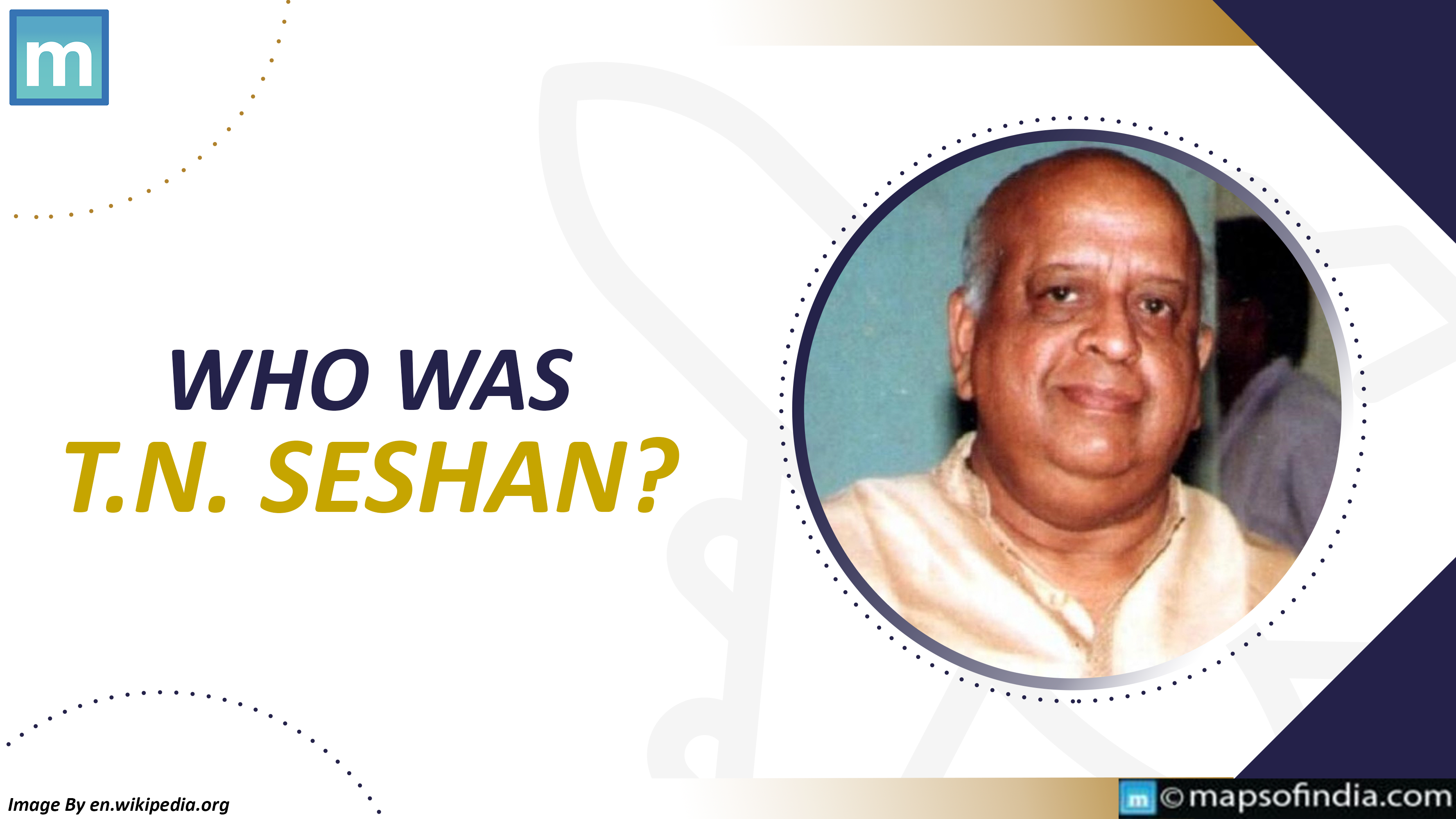T.N. Seshan, who served as chief election commissioner from 1990 to 1996, started the process of purging the electoral system. He introduced the implementation of voter photo identity cards. He ensured the parties and candidates took the model code of conduct seriously, even though it had previously been regarded as a document of scholarly interest. Seshan showed the outside world that his position was serious business, even in the face of backlash alleging he had gone beyond his authority. He was born in Palakkad, Kerala, on December 15, 1932. He was an IAS officer from the 1955 Tamil Nadu cadre. A Madras Christian College alum, he completed a year-long management course at Harvard University in the 1960s while serving as an IAS officer.
Anti-Hindi agitation
Although most people considered the Tamil Nadu portion of his tenure to be uneventful, he gained public notice as the Madurai District Collector in 1965–1967 when he firmly handled anti-Hindi demonstrators.
When M.G. Ramachandran was Chief Minister of Tamil Nadu for the first time (1977–1980), he served in the administration as the Industries Secretary and the Agriculture Secretary. He had to choose a Central posting because he disagreed with his political overlords. Seshan’s actions as Chief Election Commissioner (CEC) did not surprise P.N. Vedanarayanan, a friend and former Vigilance Commissioner in Tamil Nadu and his batchmate. Seshan served in several capacities at the Center, including Secretary of the Environment and Forests, Secretary of Security, Secretary of Defense, and eventually Cabinet Secretary. Following his defeat in 1989, Rajiv Gandhi was gradually relieved of his Cabinet Secretary duties and allowed to serve as a member of the Planning Commission.
Intended to do business
In December 1990, Seshan was appointed to the CEC when Chandra Shekhar was elected prime minister with the Congress’s backing. He had soon demonstrated that he meant business. He was renowned for not being a foolish CEC and for enforcing discipline on political parties and candidates uniquely. Several politicians took offence to him, notably the former Tamil Nadu chief minister, Jayalalithaa, who once called him an “embodiment of arrogance.”
He stuck to his guns, saying all elections ought to be conducted in compliance with electoral rules and the model code of conduct. In the infamous Karnataka Assembly elections of December 1994, he chastised Union Ministers Sitaram Kesri and Kalpnath Rai for their alleged attempt to “influence voters.” That issue would not arise again, Prime Minister P.V. Narasimha Rao had promised.
The Election Commission of India (ECI) highlighted 150 electoral malpractices as part of their version of electoral reforms. It was his successors that refined the process that Mr. Seshan had started. The Commission became a multi-member body in October 1993 with the appointment of M.S. Gill and G.V.G. Krishnamurty during Mr. Seshan’s tenure. The Supreme Court affirmed the government’s appointment of Election Commissioners despite his opposition to the government’s action.
Seshan’s tenure was described as a “turning point” in the ECI’s history by former CEC T.S. Krishna Murthy, the author of Miracle of Democracy: India’s Amazing Journey. Seshan received the Magsaysay prize. Seshan briefly rose to fame in the middle of the 1990s, when he was viewed as a champion against electoral fraud and corruption. His 1996 Ramon Magsaysay Award brought him recognition on a global scale for his work.
Days before the publication of Seshan’s biography in October 1994, the book generated much controversy due to certain references to the late Chief Minister C.N. Annadurai that Tamil Nadu’s political parties deemed insulting. The references were removed before the book was published. Seshan ran an unsuccessful campaign against K.R. Narayanan in the July 1997 presidential election. The Congress fielded him two years later to challenge then-Union Home Minister L.K. Advani in the Gandhinagar parliamentary seat, but he was unsuccessful. The Sathyabama Institute of Science and Technology, a recognized university, hired him as an adviser after that. Chandrasekharendra Saraswathi, the 68th pontiff of the Kanchi Mutt, was a devoted follower of his (1894-1994).
